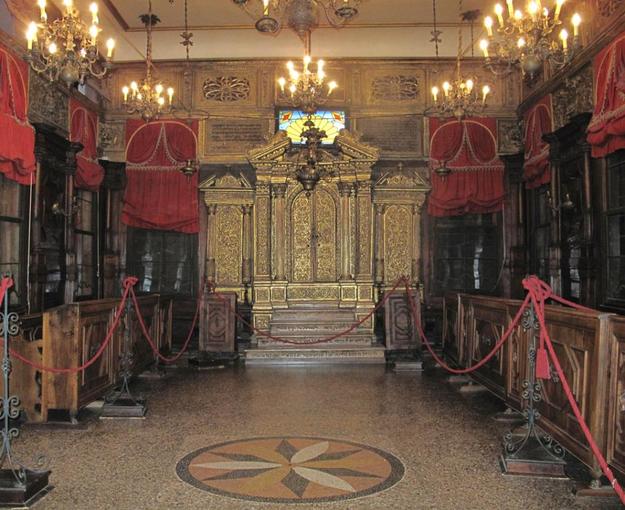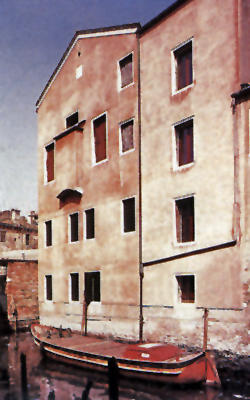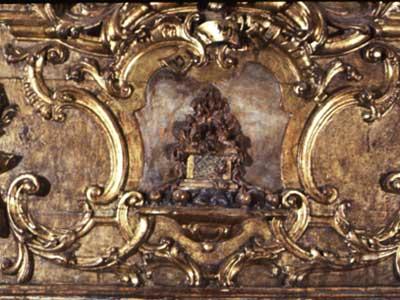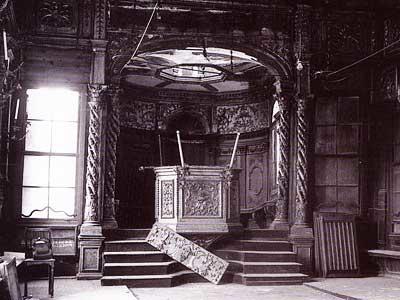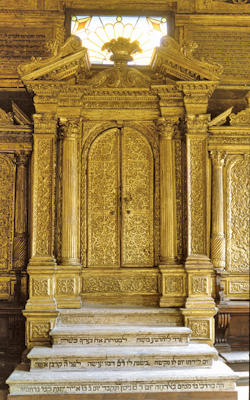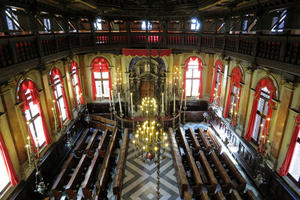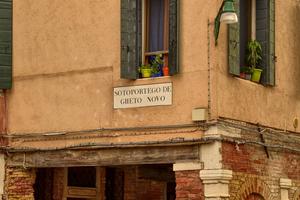Schola Canton
Background
The Schola Canton, constructed in 1532, shortly after the enforced segregation of Jews in the Venetian Ghetto Nuovo, stands as one of the oldest and most important extant Jewish institutions in the city. The Ghetto Nuovo is often considered the first Jewish ghetto in Europe and the Schola Canton, which occupies the top floor of a vernacular building in the settlement, reflects both the vibrancy of Jewish life in medieval Venice and the continued attempts by ruling authorities to suppress Jewish culture within the ghetto. Inconspicuous from the outside but richly decorated within, Schola Canton remained largely unknown to outsiders, even as its importance to the Ashkenazi liturgical community increased.
Though the gates to the ghetto were torn down following Napoleon’s conquest of the city in 1797, a measure of equal rights was not extended to Venetian Jews until the region became part of the Italian nation as a result of unification in 1866. Home to thousands of Venetian Jews in the fifteenth and sixteenth centuries, the Ghetto Nuovo today has only a small Jewish community but its history can still be explored through its evocative buildings.
How We Helped
Before WMF began work on the Scola Canton in 1973, structural deficiencies in the building housing the synagogue threatened to topple the edifice and pitch it into the adjacent canal. Working with an emergency grant from the Chicago chapter of the Venice Committee, WMF reinforced the foundation masonry of the building and removed the risk of its collapse. In 1983, following those crucial structural renovations, WMF repaired the synagogue’s matroneo (women’s balcony), rebuilt its marmorino ceiling, and installed a new electrical system within the building. WMF also oversaw the cleaning of various carved and gilt surfaces within the synagogue, its terrazzo floor, and its chandeliers and curtains.
Over thirty years later, Schola Canton’s sanctuary has suffered from deterioration and requires a new conservation campaign. In 2014, WMF supported a project to clean, repair, consolidate and re-gild its intricately carved wooden surfaces, including the bima, aron kodesh, and decorative panels. The team of conservators carefully studied the techniques employed in past interventions and the current state of preservation for each methodology to determine the best approach for each wooden element. This project was made possible with support from the David Berg Foundation. In 2016, the Schola Canton was one of three synagogues in Venice where WMF supported a window restoration project.
Why It Matters
As a marker of Jewish history in Venice and the Ghetto Nuovo, the Schola Canton remains an important site for Jews living in the city, and a significant monument to Jewish cultural history. Additionally, the quality of the site’s craftsmanship reflects the influence of both the Jewish and Venetian cultural aesthetics on the ghetto community, both at the time of the Schola Canton’s creation in the sixteenth century and during subsequent additions and renovations to the synagogue. WMF’s work at the site ensures the building’s immediate survival and showcases the synagogue’s unique decorative achievements.
World Monuments Fund's work at Schola Canton has been made possible, in part, by support from The Robert W. Wilson Charitable Trust; the David Berg Foundation; and Daniel Belin and Kate Ganz.

